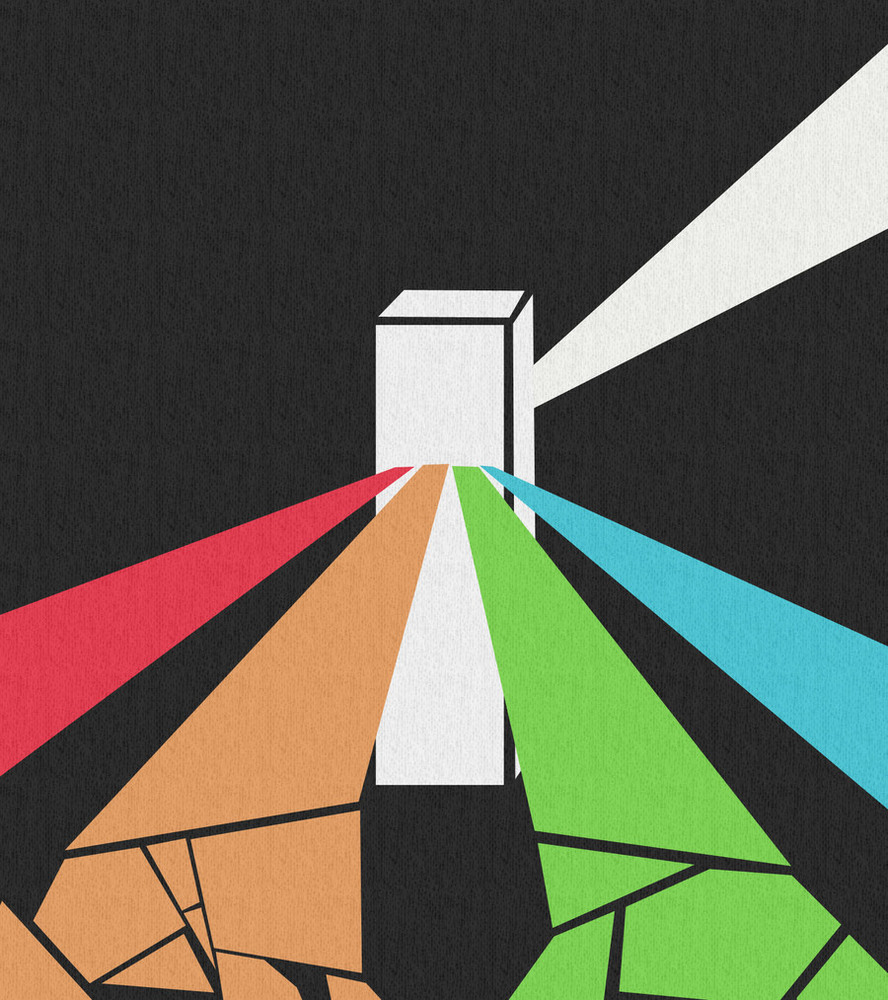Curatorial Statement
The composition portrays light passing through a cuvet in a UV visible spectrophotometer. The single beam of light is diffracted and splits into different wavelengths of light which then are measured by the machine. The emitted light splits into tiny packets of energy called photons, displaying the individual components. The machine then takes this emitted light and measures its absorbance. The instrument is capable of utilizing a single beam of light to find the concentration of its separate elements. The sample being measured is made up of various substances and this machine can isolate a certain individual component.
This piece captures the complex nature of everyday objects, but breaks them down into its simplest components. It is inspired by the Bauhaus art movement in its “honest” and “truthful” portrayal of this instrument. It uses distinct shapes, line, colors and textures to generate a more artistic element to this scientific process. The textured shapes give an impression as if it were actually painted on a canvas.
The instrument itself is efficient for observing the singular elements within the sample being measured, which represents the simple components that make up complex objects. We are not exempt from this statement, as complex as we as human being are. Chemically we are made up of the simplest of physical substances: atoms. The piece focuses on the chemical aspects of engineering and incorporates that into the universal fact that indeed everything is made up of something smaller and simpler.
